
Haberdashers' Boys' School is a 4–18 boys public school in Elstree, Hertfordshire, England. It is a member of the Headmasters' and Headmistresses' Conference as well as the Rugby Group.

Dr Challoner's Grammar School is a selective grammar school for boys, with a co-educational Sixth Form, in Amersham, Buckinghamshire, England. It was given academy status in January 2011.

Bakewell is a market town and civil parish in the Derbyshire Dales district of Derbyshire, England, known for Bakewell pudding. It lies on the River Wye, 15 miles (23 km) south-west of Sheffield. At the 2011 census, the population of the civil parish was 3,949. It was estimated at 3,695 in 2019. The town is close to the tourist attractions of Chatsworth House and Haddon Hall.
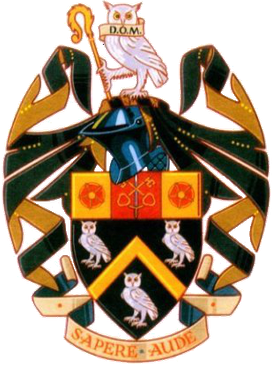
The Manchester Grammar School (MGS) in Manchester, England, is the largest private day school for boys in the United Kingdom. Founded in 1515 as a free grammar school next to Manchester Parish Church, it moved in 1931 to its present site at Rusholme. In accordance with its founder's wishes, MGS remains a predominantly academic school and belongs to the Headmasters' and Headmistresses' Conference.
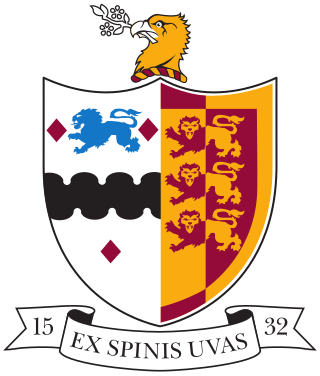
Bristol Grammar School (BGS) is a 4–18 mixed, private day school in Bristol, England. It was founded in 1532 by Royal Charter for the teaching of 'good manners and literature', endowed by wealthy Bristol merchants Robert and Nicholas Thorne. The school flourished in the early 20th century under headmaster Sir Cyril Norwood (1906–1916), embodying "the ideals and experiences of a leading public school". Norwood went on to serve as the master at Marlborough College and Harrow, and as president of St John's College, Oxford.

Colchester Royal Grammar School (CRGS) is a state-funded grammar school in Colchester, Essex. It was founded in 1128 and was later granted two royal charters - by Henry VIII in 1539 and by Elizabeth I in 1584.

Oakham School is a public school in Oakham, Rutland, England.

Sir John Deane's Sixth Form College is a sixth form college in Northwich, Cheshire, UK. It was formerly Sir John Deane's Grammar School, which was founded in 1557.

The Skinners' School, is a British Grammar School with academy status for boys located in the town of Royal Tunbridge Wells, Kent, England. Established in 1887, the school was founded by the Worshipful Company of Skinners in response to a demand for education in the region. Today Skinners' remains an all-boys grammar school, recently awarded specialist status in science and mathematics in recognition of these disciplines' excellent teaching. The current enrolment is 1119 pupils, of whom around 326 are in the sixth form. The first headmaster was Reverend Frederick Knott, after whom Knott House is named. The current Headmaster is Edward Wesson.

Clitheroe Royal Grammar School is a co-educational grammar school in the town of Clitheroe in Lancashire, England, formerly an all-boys school. It was founded in 1554 as "The Free Grammar School of King Philip and Queen Mary" "for the education, instruction and learning of boys and young men in grammar; to be and to continue for ever."

Wisbech Grammar School is an 11–18 mixed, Church of England, private day school and sixth form in Wisbech, Isle of Ely, Cambridgeshire, England. Founded by the Guild of the Holy Trinity in 1379, it is one of the oldest schools in the country.

Hutton Grammar School is an 11–18 boys voluntary aided, state-funded Church of England comprehensive day school. It is located 3 miles (4.8 km) south west of Preston, Lancashire, in Hutton, England. It provides education for boys from the age of 11 to 16, and in the Sixth Form for both boys and girls.
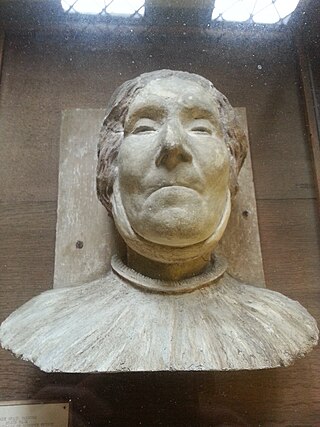
Grace, Lady Manners was an English noblewoman who lived at Haddon Hall near Bakewell, Derbyshire. She founded Bakewell's Lady Manners School in 1636.

All Saints' Church, Bakewell, is the parish church of Bakewell, Derbyshire, England. It is a Grade I listed building.
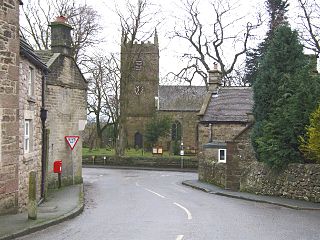
Elton is a village and civil parish in the Derbyshire Dales district of Derbyshire, England, and lies within the Peak District. Its nearest towns are Bakewell and Matlock.
The Dronfield Henry Fanshawe School is a mixed, state comprehensive school for 11- to 18-year-olds, in the town of Dronfield, Derbyshire, United Kingdom.
Old Swinford Hospital is a secondary boarding school in Oldswinford, Stourbridge, West Midlands, England that has been in continuous operation since the 17th century. It is one of 36 state boarding schools in England, meaning school fees are funded by the LEA and pupils only pay boarding fees. Girls are admitted into the sixth form as day pupils. Girls will be admitted from year 7 onwards in 2021.
Glossopdale School is a mixed secondary school and sixth form located in Hadfield, Derbyshire, England.
Robert Steadman is a British composer of classical music who mostly works in a post-minimalist style but also writes lighter music, including musicals, and compositions for educational purposes. He also teaches, writes articles for music education journals, notably Classroom Music, and has written several revision guides for GCSE Music and A-level Music Technology.
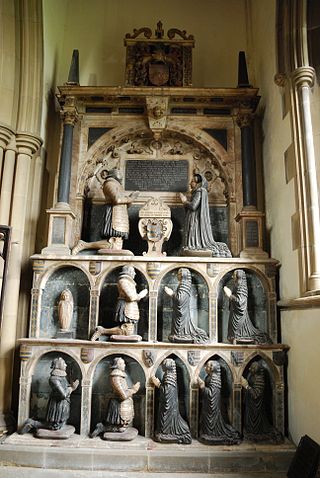
Sir George Manners (1569–1623) of Haddon Hall in Derbyshire, England, served as a Member of Parliament for Nottingham, 1588–1589, and for Derbyshire, 1593–1596. His elaborate triple-decked monument with kneeling effigies of himself and his wife and family survives in the Vernon/Haddon Chapel, All Saints Church, Bakewell, Derbyshire.




















